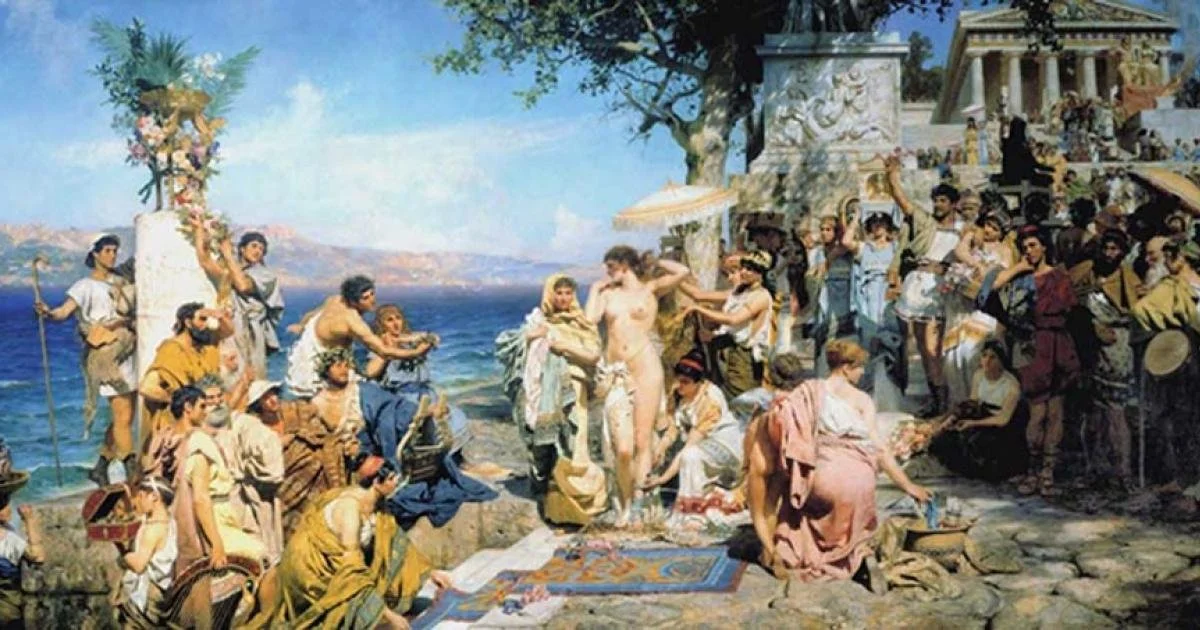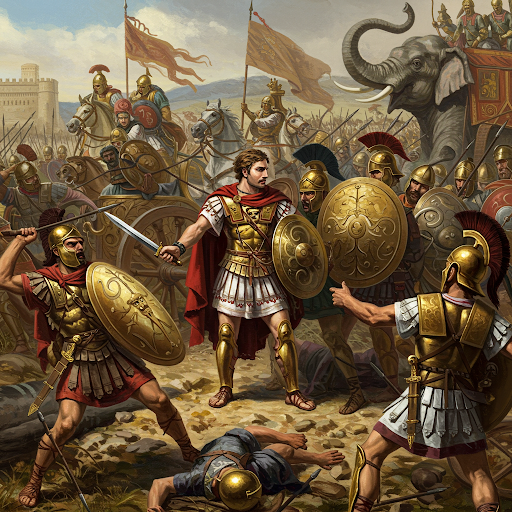The Eleusinian Mysteries were among the most significant and secretive religious rites in ancient Greece. Centered around the worship of the goddesses Demeter and Persephone, these rites promised initiates a blessed afterlife and a deeper understanding of the cycle of life and death. The Mysteries were held annually in the town of Eleusis, near Athens, and attracted participants from across the Greek world, from common citizens to kings and philosophers.
This article delves into the Eleusinian Mysteries, exploring their origins, the initiation process, the rituals involved, and their enduring influence on Western religious thought.
Origins of the Eleusinian Mysteries
The Eleusinian Mysteries trace their origins to the myth of Demeter and Persephone, one of the most important stories in Greek mythology. According to the myth, Persephone, the daughter of Demeter, was abducted by Hades, the god of the underworld. In her grief, Demeter, the goddess of agriculture and fertility, caused the earth to become barren, leading to widespread famine. Eventually, a compromise was reached: Persephone would spend part of the year with Hades in the underworld and part of the year with Demeter on earth. This myth symbolized the changing seasons and the cycle of life and death.
The Eleusinian Mysteries were believed to have been established in honor of Demeter and Persephone, celebrating their reunion and the renewal of life. The rituals at Eleusis were thought to reenact the myth, offering initiates a symbolic death and rebirth, and the promise of a more favorable fate in the afterlife.
The exact origins of the Mysteries are shrouded in mystery, but they were likely established in the Mycenaean period (c. 1600-1100 BCE) and became a major religious festival by the 7th century BCE. The Mysteries were closely associated with the Athenian state, and participation in them was seen as a civic duty as well as a religious experience.
The Initiation Process: From Lesser to Greater Mysteries
The Eleusinian Mysteries were divided into two main stages: the Lesser Mysteries and the Greater Mysteries. The Lesser Mysteries were held in the spring, usually in the month of Anthesterion (February-March), at Agrae, near the Ilissos River in Athens. The purpose of the Lesser Mysteries was to prepare initiates, known as mystai, for the more significant Greater Mysteries. The rites involved purification rituals, such as fasting and bathing, and preliminary sacrifices to the gods. Little is known about the specific activities of the Lesser Mysteries, as they were considered preparatory and were shrouded in secrecy.
The Greater Mysteries, held in the month of Boedromion (September-October), were the culmination of the Eleusinian religious experience. These ceremonies took place over nine days and involved a series of elaborate rituals, processions, and sacred rites. The Greater Mysteries were open to all Greek-speaking people, regardless of gender or social status, as long as they had not committed murder and were willing to undergo the necessary purification rituals.
The initiation process was highly secretive, and initiates were sworn to absolute secrecy about the details of the rites. This secrecy was enforced under penalty of death, which has left modern scholars with only limited knowledge of the specifics of the ceremonies. However, it is believed that the rites involved symbolic representations of the myth of Demeter and Persephone, including the abduction of Persephone, Demeter’s search for her daughter, and their eventual reunion.
The climax of the Greater Mysteries likely took place in the Telesterion, the great hall of initiation at Eleusis. Here, the initiates would witness sacred objects and rituals that symbolized the mysteries of life, death, and rebirth. This experience was said to bring about a profound spiritual transformation, offering initiates a deeper understanding of the human condition and the promise of a better afterlife.
The Rituals of the Eleusinian Mysteries
While the exact details of the Eleusinian Mysteries remain unknown, certain elements of the rituals have been reconstructed from ancient sources and archaeological evidence. The rituals were designed to be a transformative experience, leading initiates through a symbolic journey of death and rebirth.
The ceremonies began with a procession from Athens to Eleusis, a journey of about 14 miles, known as the Sacred Way. This procession, which included priests, priestesses, and initiates, was a key part of the rituals. Along the way, participants would stop at various sacred sites, including the well of Kallichoron, where Demeter was said to have rested during her search for Persephone.
Upon reaching Eleusis, the initiates underwent further purification rituals, which may have included fasting, sacrifices, and the consumption of the kykeon, a sacred drink made from barley and mint. The kykeon was believed to have psychoactive properties, which may have heightened the initiates’ spiritual experience during the rites.
The core of the Mysteries took place within the Telesterion, where the most sacred and secretive rites occurred. It is here that the initiates would have witnessed the anaktoron, a small inner chamber that housed sacred objects related to the myth of Demeter and Persephone. The precise nature of these objects and the rituals performed with them remain a mystery, but they were believed to symbolize the cycle of life, death, and rebirth.
The culmination of the Greater Mysteries was likely a dramatic reenactment of the reunion of Demeter and Persephone, symbolizing the triumph of life over death. This reenactment would have been accompanied by hymns, prayers, and possibly the display of a sheaf of wheat, representing the renewal of life and the promise of fertility.
The final day of the Mysteries involved a celebration known as the plemochoai, where initiates would pour libations into the earth as an offering to the chthonic deities. This act symbolized the return of life to the earth and the participants’ connection to the divine.
The Cultural and Spiritual Impact of the Eleusinian Mysteries
The Eleusinian Mysteries were not only a religious experience but also a deeply cultural one, influencing various aspects of Greek society. Participation in the Mysteries was considered a high honor, and initiates included some of the most prominent figures in Greek history, including Socrates, Plato, and possibly even Alexander the Great.
The Mysteries provided a shared religious experience that transcended social and political boundaries, fostering a sense of unity among the Greek people. The rites offered a vision of the afterlife that was more hopeful than the grim existence depicted in much of Greek mythology. This promise of a blessed afterlife, coupled with the profound spiritual transformation experienced during the initiation, made the Eleusinian Mysteries one of the most enduring and revered religious practices in the ancient world.
The influence of the Eleusinian Mysteries extended beyond Greece, as they were adopted by the Romans and continued to be practiced well into the Roman Empire. The Mysteries also had a lasting impact on Western religious thought, contributing to the development of later mystery religions and influencing early Christian concepts of resurrection and eternal life.
The Decline and Legacy of the Eleusinian Mysteries
The Eleusinian Mysteries continued to be celebrated for nearly two millennia, surviving even the rise of Christianity. However, the spread of Christianity and the eventual suppression of pagan religions led to the decline of the Mysteries. In 392 CE, the Roman Emperor Theodosius I officially banned the Eleusinian Mysteries as part of his efforts to promote Christianity and eliminate pagan practices. The final blow came in 396 CE, when the sanctuary at Eleusis was destroyed by the Visigoths, marking the end of the ancient rites.
Despite their decline, the Eleusinian Mysteries left a profound legacy in Western religious and philosophical thought. The themes of death, rebirth, and the promise of a better afterlife resonate in many religious traditions, and the Mysteries’ emphasis on personal spiritual transformation has influenced various esoteric and mystical practices throughout history.
The Mysteries of Eleusis also had a lasting impact on art and literature, inspiring numerous works that explore the myth of Demeter and Persephone and the symbolism of the rites. Today, the ruins of Eleusis remain a site of historical and archaeological significance, attracting visitors who seek to connect with the ancient past and the enduring mystery of the Eleusinian rites.
Conclusion: The Enduring Mystery of Eleusis
The Eleusinian Mysteries remain one of the most intriguing and enigmatic aspects of ancient Greek religion. Although the exact details of the rites have been lost to history, their influence on Greek culture, religion, and philosophy is undeniable. The Mysteries offered a unique religious experience that promised initiates a deeper understanding of life and death and a more hopeful vision of the afterlife.
As we continue to study and explore the Eleusinian Mysteries, we are reminded of the enduring power of myth and ritual to shape human experience and connect us to the divine. The legacy of the Mysteries lives on in the many religious and philosophical traditions that have drawn inspiration from their themes of transformation, renewal, and the eternal cycle of life and death.









